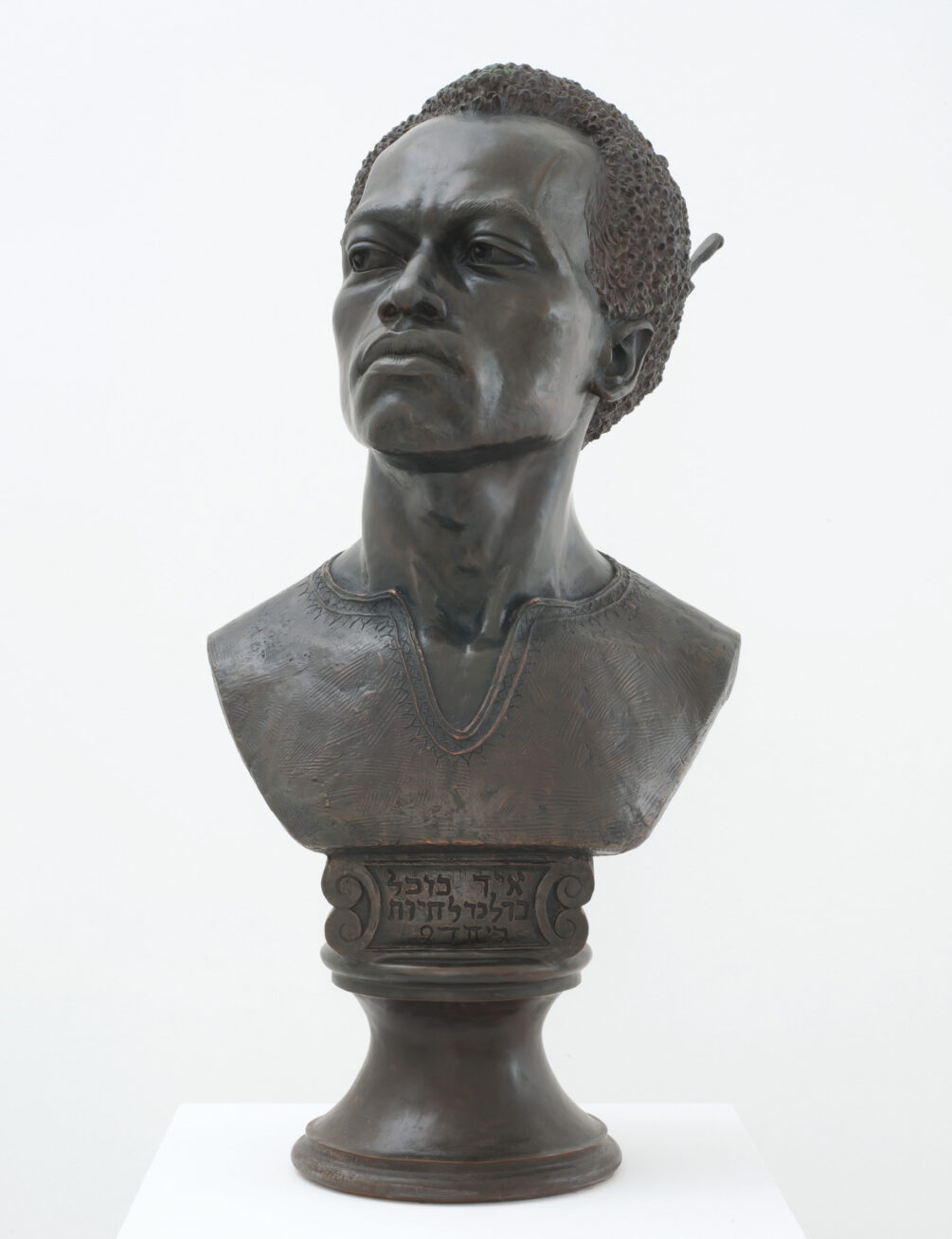
Contemporary artist Kehinde Wiley created this powerful bronze sculpture as part of an ongoing project to represent urban black and brown men within the Western tradition of heroic portraiture. Wiley grew up in South Central Los Angeles, the child of an African American mother and a Nigerian father. For many of his projects, he selects his subjects through the practice of “street casting.” He approaches strangers on city streets and invites them to model for him in their own clothing. Initially, Wiley painted these men in poses borrowed from the work of Renaissance and Baroque masters. Later, his work expanded to include sculpture as well as painting and, in 2006, to embrace the “World Stage,” depicting men from Mumbai, Dakar, Rio de Janeiro, and other cities around the world.
This classical-style bust is a monumental portrait of Likunt Daniel Ailin, an Ethiopian Jewish Israeli man whom Wiley met in Tel Aviv. Ailin’s story and situation as a person of color in modern Israel intersected with Wiley’s ongoing investigation of the tensions of identity, place, and history. Jews began migrating to Israel from Ethiopia in the late 1970s to escape religious persecution, famine, and civil wars. The Israeli government assisted the migration with two dramatic rescue operations, Operation Moses (1984–5) and Operation Solomon (1991), and by the late 1990s over 90,000 members of the community had arrived in Israel. Israel initially welcomed the migrants and provided for basic needs such as healthcare and housing. However, Ethiopian Jews encountered persistent racism and discrimination and remain among the poorest and least educated population in Israel.
Wiley was fascinated by Israel as a nation of people escaping social, economic, and religious persecution elsewhere only to find themselves enmeshed in systems of discrimination in their new homeland. Wiley accentuates the contemporary political context of the work in a few ways. He incorporates the model’s own shirt and afro pick into the sculpture. The Hebrew sentence at the base of the sculpture asks, “What would make it possible for us to live together?” It is a reference to words spoken by Rodney King, a black man whose brutal beating by Los Angeles police was caught on videotape. In 1992, when a jury acquitted the police officers of all charges in the beating, Los Angeles erupted in riots. King made a public plea for calm, asking, “Can we all get along?” Wiley’s work simultaneously addresses racial tensions in Israel and the United States, as well as underlining the larger political issues in the Middle East today.
Discussion and activities
- Write down 10 words to describe this work. How would you characterize Ailin’s posture and expression? What emotions does this sculpture express?
- How do you think this work would feel to the touch? Would you expect it to be heavy or light to lift? How does the material interact with light, absorbing light in some areas and reflecting it in others? Why do you think Wiley chose bronze as the material for this sculpture?
- Which features of this work suggest the classical style associated with ancient Greek and Roman art? Which features evoke the contemporary world?
- Compare Wiley’s sculpture to other busts at the Portland Art Museum, such as Dominique Maggesi’s Portrait of Docteur A (1844), Pablo Picasso’s Tête de femme (Fernande) (1909), and Constantin Brancusi’s A Muse (1918). What differences and similarities do you observe in the materials and styles of these works? (Please note, images of all of these works can be found in online collections at portlandartmuseum.org.)
- In interviews, Wiley has said that his works “quote historical sources and position young black men within the field of power.” He has also said that he is “interested in using the past to break open the present day.” In what ways does this sculpture position Likunt Daniel Ailin “within the field of power”? Why do you think Wiley chooses to reference historic works and styles?
Sources: kehindewiley.com and the Metropolitan Museum of Art Artist Project - Propose a sculpture of someone you know in a project that relates to Wiley’s work. How would you represent an ordinary person “within the field of power”? What choices would you make of materials, posture, and expression in order to invest that person with authority? Create a model of the sculpture using clay, pipe cleaners, or any materials you have available. To mimic Wiley’s method, photograph your model first, then create your sculpture based on the photographs.